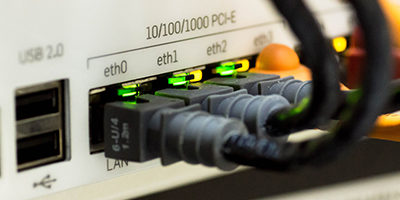%
Jubak’s Picks Performance 1997-2019
Jubak’s Picks
Buy and hold? Not really.
Short-term trading?
Not by a long shot.
So what is the stock-picking style of The Jubak’s Picks portfolio?
Click to expand...
Click to View the Jubak’s Picks Portfolio
I try to go with the market’s momentum when the trend is strong and the risk isn’t too high, and I go against the herd when the bulls have turned piggy and the bears have lost all perspective. What are the results of this moderately active — the holding period is 12 to 18 months — all-stock portfolio since inception in May 1997? A total return of 584% as of December 31, 2019. That compares to a total return on the S&P 500 stock index of 335% during the same period.
%
Top 50 Stocks Performance 2019
Top 50 Stocks
This long-term, buy-and-holdish portfolio was originally based on my 2008 book The Jubak Picks.
Trends that are strong enough, global enough, and long-lasting enough to surpass stock market averages.
Click to expand...
Click to view the Top 50 Stocks Portfolio
In The Jubak’s Picks Portfolio I identified ten trends that were strong enough, global enough, and long-lasting enough to give anyone who invested in them a good chance of beating the stock market averages.
To mark the publication of my new book on volatility, Juggling with Knives, and to bring the existing long-term picks portfolio into line with what I learned in writing that book and my best new ideas on how to invest for the long-term in a period of high volatility, I’m completely overhauling the existing Top 50 Picks portfolio.
You can buy Juggling with Knives at bit.ly/jugglingwithknives
%
Dividend Income Performance 2021
Dividend Income
Every income investor needs a healthy dose of dividend stocks.
Why bother?
Why not just concentrate on bonds or CDs?
Click to expand...
Click to view the Dividend Income Portfolio
Because all the different income-producing assets available to income investors have characteristics that make them suited to one market and not another. You need all of these types of assets if you’re going to generate maximum income with minimum risk as the market twists and turns.
For example: bonds are great when interest rates are falling. Buy early in that kind of market and you can just sit back and collect that initial high yield as well as the capital gains that are generated as the bonds appreciate in price with each drop in interest rates.
CDs, on the other hand, are a great way to lock in a yield with almost absolute safety when you’d like to avoid the risk of having to reinvest in an uncertain market or when interest rates are crashing.
Dividend stocks have one very special characteristic that sets them apart from bonds and CDs: companies raise dividends over time. Some companies raise them significantly from one quarter or year to the next. That makes a dividend-paying stock one of the best sources of income when interest rates start to rise.
Bonds will get killed in that environment because bond prices will fall so that yields on existing bonds keep pace with rising interest rates.
But because interest rates usually go up during periods when the economy is cooking, there’s a very good chance that the company you own will be seeing rising profits. And that it will raise its dividend payout to share some of that with shareholders.
With a dividend stock you’ve got a chance that the yield you’re collecting will keep up with rising market interest rates.
But wouldn’t ya know it?
Just when dividend investing is getting to be more important—becoming in my opinion the key stock market strategy for the current market environment—it’s also getting to be more difficult to execute with shifting tax rates and special dividends distorting the reported yield on many stocks.
I think there’s really only one real choice—investors have to pull up their socks and work even harder at their dividend investing strategy. That’s why I revamped the format of the Dividend Income portfolio that I’ve been running since October 2009. The changes aren’t to the basic strategy. That’s worked well, I think, and I’ll give you some numbers later on so you can judge for yourself. No, the changes are designed to do two things: First, to let you and me track the performance of the portfolio more comprehensively and more easily compare it to the performance turned in by other strategies, and second, to generate a bigger and more frequent roster of dividend picks so that readers, especially readers who suddenly have a need to put more money to work in a dividend strategy, have more dividend choices to work with.
Why is dividend investing so important in this environment? I’ve laid out the reasons elsewhere but let me recapitulate here. Volatility will create repeated opportunities to capture yields of 5%–the “new normal” and “paranormal” target rate of return–or more as stock prices fall in the latest panic. By using that 5% dividend yield as a target for buys (and sells) dividend investors will avoid the worst of buying high (yields won’t justify the buy) and selling low (yields will argue that this is a time to buy.) And unlike bond payouts, which are fixed by coupon, stock dividends can rise with time, giving investors some protection against inflation.
The challenge in dividend investing during this period is using dividend yield as a guide to buying and selling without becoming totally and exclusively focused on yield. What continues to matter most is total return. A 5% yield can get wiped out very easily by a relatively small drop in share price.
Going forward, I will continue to report on the cash thrown off by the portfolio—since I recognize that many investors are looking for ways to increase their current cash incomes. But I’m also going to report the total return on the portfolio—so you can compare this performance to other alternatives—and I’m going to assume that an investor will reinvest the cash from these dividend stocks back into other dividend stocks. That will give the portfolio—and investors who follow it—the advantage of compounding over time, one of the biggest strengths in any dividend income strategy.
What are some of the numbers on this portfolio? $29,477 in dividends received from October 2009 through December 31, 2013. On the original $100,000 investment in October 2009 that comes to a 29.5% payout on that initial investment over a period of 39 months. That’s a compound annual growth rate of 8.27%.
And since we care about total return, how about capital gains or losses from the portfolio? The total equity price value of the portfolio came to $119,958 on December 31, 2012. That’s a gain of $19,958 over 39 months on that initial $100,000 investment or a compound annual growth rate of 5.76%.
The total return on the portfolio for that period comes to $49,435 or a compound annual growth rate of 13.2%.
How does that compare to the total return on the Standard & Poor’s 500 Stock Index for that 39-month period? In that period $100,000 invested in the S&P 500 would have grown to $141,468 with price appreciation and dividends included.) That’s a total compounded annual rate of return of 11.26%.
That’s an annual 2 percentage point advantage to my Dividend Income portfolio. That’s significant, I’d argue, in the context of a low risk strategy.
Portfolio Related Posts
Doing a little selling to raise some cash for potential bargains: Selling Invesco Yen ETF, JD.Com, and Vanguard Treasury ETF
Let’s be clear. I don’t have any idea of when the current selling in technology and high-valuation growth momentum stocks will end. It does seem likely to me, even after the March 9 bounce, that the rotation into cyclicals, vaccine recovery stocks, and value stocks will continue for a while. From that perspective, I’m glad that I added Invesco KBWB Bank ETF (KBWB), Vulcan Materials (VMC), Caterpillar (CAT), MGM Resorts International (MGM) and Coca Cola (KO) to my Jubak Picks Portfolio since the middle of February. And that I added Dow (DOW) and Citigroup (C) to my Dividend Portfolio in Mid-December. (All those picks are in the black since my purchase date. You can check the online portfolios to see by how much.) But now that the NASDAQ Composite has dropped into an official correction–down 10% from its February 12 high–I’d like to be holding some more cash in case
Buying Marvell Technology Group in my Jubak Picks Portfolio
While the NASDAQ Composite and Standard & Poor’s 500 were flirting with a correction on March 4, Marvell Technology Group (MRVL) has moved into its own better than 10% drop in just the last week. The stock is down 13.89% in the last week as of the close yesterday March 4 at $40.10. The stock is now down 15.66% for 2021 to date. I’m going to use this correction to add the shares to my Jubak Picks Portfolio on March 5 with a target price of $48 a share. The stock pays a tiny 0.60% dividend.
Just so we’re all on the same page: My buy of CPER and KWBW hedges posted yesterday and an add of the KWBW hedge to the Jubak Picks Portolio today
Yesterday in my YouTube video and in my latest addition to my Special Report: “Profit and Protect” I added the U.S. Copper Fund ETF (CPER) and the Invesco KBW Bank ETF (KBWB) to my Perfect Five ETF Portfolio. In that portfolio they will replace the SPDR Gold Trust ETF (GLD) and the Vanguard Intermediate Term Treasury Bond ETF (VGIT), respectively. The two new ETFs will keep the portfolio weighting of the out-going ETFs at 25% and 20%, respectively. You can find more about the logic of these hedges and about the specifics of these ETFs in my video and in my Special Report update. Tomorrow I’ll also be adding the Invesco KBW Bank ETF to my Jubak Picks Portfolio.
So what’s the matter with Incyte stock? Just about nothing although you wouldn’t know it from the recent price movement
Shares of biotech stock Incyte (INCY) have been down significantly in 2021. For the year to date, as of the close on March 2, the shares were down 8.45%. In the last month they’ve tumbled 12.42%. So what’s wrong? Pretty much nothing. With the individual stock anyway. What we’re watching is a lot of selling in the biotech sector as part of the recent sell-off on risk. And on substantial profit taking.
Keeping Palo Alto Networks with a big boost to my target price
After the close on Monday February 22 Palo Alto Networks (PANW) reported a loss of $1.42 million (or $1.48 a share) on revenue of $1.02 billion million for the company’s fiscal second quarter. Adjusted earnings–which exclude share-based compensation and other items, were $1.53 a share. Revenue grew by 25% year over year. Wall Street had been looking for adjusted earnings of $1.43 a share on revenue of $986 million. Billings for future orders ross to $1.21 billion from $999 in the year ago wearer. Analysts had forecast billings of $1.18 billion. But the shares fell in after hours trading when in its conference call the company forecast adjusted earnings of $1.27 to $1.29 a share on revenue of $1.05 to $1.06 billion for the fiscal third quarter. Analysts were looking for adjusted earnings of $1.29 a share on revenue of $1.05 billion for the fiscal third quarter. For the full fiscal year Palo Alto Networks forecast adjusted earnings of $5.80 to $5.90 a share on revenue of $4.15 billion to $4.2 billion. Wall Street had been looking for $5.79 a share in adjusted earnings on revenue of $4.12 for the year. On the plus side of the ledger there are two reasons that I’m keeping this company in my Jubak Picks Portfolio and my long-term 50 Stocks Portfolio
Stocks bounce back as bond prices take a breather and yields fall slightly
As of 2 p.m. New York Time today, March 1, the Standard & Poor’s 500 was up 2.57% and the Dow Jones Industrial Average was higher by 2.30%. The NASDAQ Composite had climbed 2.80% and the NASDAQ 100 had gained 2.83%. The small cap Russell 2000 had added 3.30% and the iShares 2000 MSCI Emerging Markets ETF (EEM) was up 2.90%. Yep, it didn’t take much of an improvement in the Treasury market to send investors and traders screaming back into stocks.
Watch my new YouTube Video: 5 Picks for the next 6 months
I’m starting up my videos again–this time using YouTube as a platform. The twelfth YouTube video “5 Picks for the Next Six Months” went up today.
Jubak Picks recommendation Applied Materials blows out the quarter and raises guidance
Given how strong the earnings beat was for the last quarter and how big the increase in guidance was for the next quarter from Jubak Picks Portfolio recommendation Applied Materials (AMAT) after the market close last night (February 18) today’s stock gain of 5.19% was actually rather modest.










